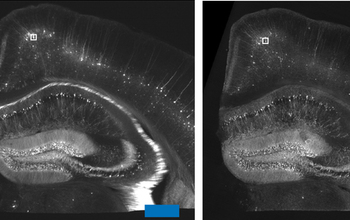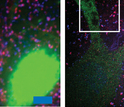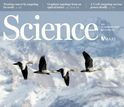Hola amigos: A VUELO DE UN QUINDE EL BLOG., hemos recibido de la Fundación Nacional de Ciencia de Los Estados Unidos, la información sobre los tejidos cerebrales; ellos dicen : "Productos químicos comúnmente utilizados en pañales permiten muestras de cerebro de estar físicamente ampliada con agua, lo que permite a los investigadores ver detalles nanoescala.."
NSF, agrega "....Aunque la mayoría de los esfuerzos para comprender el enfoque cerebral en las nuevas tecnologías para magnificar pequeñas características anatómicas, los ingenieros del Centro con sede en el MIT Center for Brains, Minds and Machines han encontrado una manera de hacer que el cerebro físicamente más grande...."
NSF, añade: "La técnica, que los investigadores llaman microscopía expansión, utiliza un polímero expandible y agua para engrosar el tejido cerebral a eso de las cuatro y media veces su tamaño normal, por lo que las estructuras a nanoescala vez borrosas aparecen nítidas con un microscopio confocal ordinaria....
More information:
Chemicals commonly used in diapers enable brain samples to be physically enlarged with water, allowing researchers to see nanoscale details
 Credit and Larger Version |
While most efforts to understand the brain focus on new technologies to magnify small anatomical features, engineers at the MIT-based Center for Brains, Minds and Machines have found a way to make brains physically bigger.
The technique, which the researchers call expansion microscopy, uses an expandable polymer and water to swell brain tissue to about four and a half times its usual size, so that nanoscale structures once blurry appear sharp with an ordinary confocal microscope.
Expansion microscopy enables researchers to resolve details down to about 70 nanometers, while 300 nanometers was the previous limit with a conventional microscope.
Development of the novel process, which is detailed in the Jan. 15 issue of Science, was partially funded by the National Science Foundation (NSF), including support via an NSF early faculty career development award and an NSF graduate research fellowship.
The Center for Brains, Minds and Machines is an NSF science and technology center funded in 2013 as part of NSF's continuing support for the advancement of fundamental brain research.
"This clever technique, which bypasses the limitations of traditional techniques for brain imaging, has the potential to be a powerful new tool to help researchers map and understand the brain," said Pramod Khargonekar, NSF assistant director for the Engineering Directorate, which supports an array of neuroengineering projects. "It just goes to show that significant steps forward in science can emerge from unexpected and wonderful ideas."
The new method is another advance in brain imaging that brings researchers closer to illuminating the entire brain and nervous system, one of today's greatest engineering challenges.
The engineers who developed the technique, Fei Chen, Paul Tillberg and Edward Boyden at MIT, assert it offers the ability to image large, intact, 3-D brain structures with nanoscale precision for the first time.
"Expansion microscopy may provide a key tool for comprehensive, precise, circuit-wide, brain mapping," Boyden said. The team has demonstrated the process on mouse, fruit fly and zebrafish brains and is working with another team to apply it to human tissue.
Boyden adds that the process may be useful beyond the brain to other parts of the body. Many types of biological processes involve nanoscale interactions across large systems, such as cancer metastasis and immunological responses.
To learn more about NSF-supported brain research and the BRAIN Initiative, visit NSF's Understanding the Brain webpage.
-NSF-
Media Contacts Sarah Bates, NSF, (703) 292-7738, sabates@nsf.gov
Lily Whiteman, NSF, (703) 292-8070, lwhitema@nsf.gov
Related WebsitesNSF Understanding the Brain:
http://www.nsf.gov/brain
Brain power: Bright ideas and smart tools for neuroengineering:
www.nsf.gov/brainpower
http://newsoffice.mit.edu/2015/enlarged-brain-samples-easier-to-image-0115:
MIT team enlarges brain samples, making them easier to image
The National Science Foundation (NSF) is an independent federal agency that supports fundamental research and education across all fields of science and engineering. In fiscal year (FY) 2014, its budget is $7.2 billion. NSF funds reach all 50 states through grants to nearly 2,000 colleges, universities and other institutions. Each year, NSF receives about 50,000 competitive requests for funding, and makes about 11,500 new funding awards. NSF also awards about $593 million in professional and service contracts yearly.
Useful NSF Web Sites:
NSF Home Page:
http://www.nsf.gov
NSF News:
http://www.nsf.gov/news/
For the News Media:
http://www.nsf.gov/news/newsroom.jsp
Science and Engineering Statistics:
http://www.nsf.gov/statistics/
Awards Searches:
http://www.nsf.gov/awardsearch/

Illuminating the entire brain and nervous system one of the greatest engineering challenges.
Credit and Larger Version

Expanded samples imaged in three dimensions.
Credit and Larger Version

New imaging techniques have the potential to help researchers map the brain.
Credit and Larger Version

Nanoscale structures once blurry (left) appear sharp (right) with an ordinary microscope.
Credit and Larger Version

The researchers' findings are described in the Jan. 16, 2015 issue of the journal Science.
Credit and Larger Version

Expansion Microscopy brings the brain in 3-D into focus.
Credit and Larger Version
The National Science Foundation (NSF)
Guillermo Gonzalo Sánchez Achutegui
ayabaca@gmail.com
ayabaca@hotmail.com
ayabaca@yahoo.com
Inscríbete en el Foro del blog y participa : A Vuelo De Un Quinde - El Foro!

No hay comentarios:
Publicar un comentario